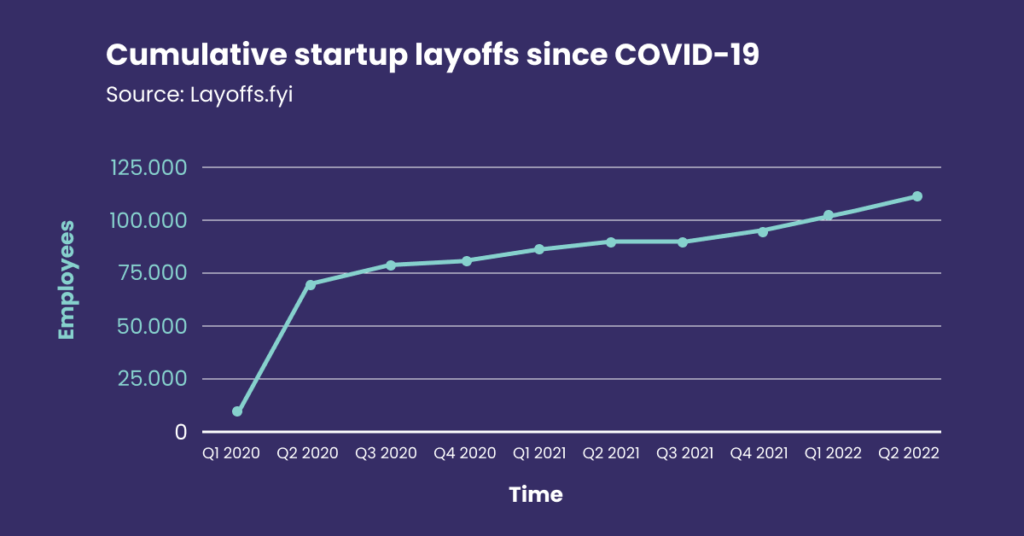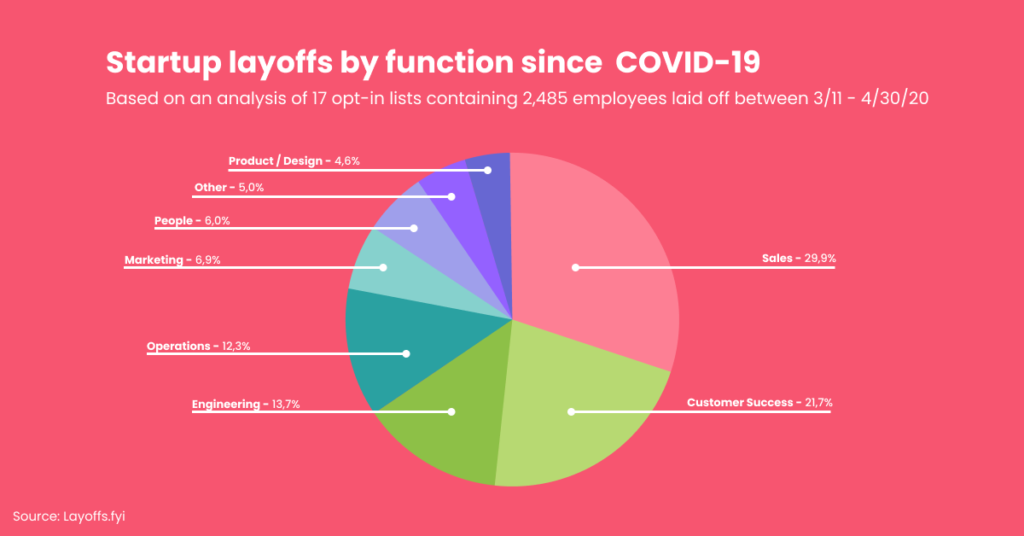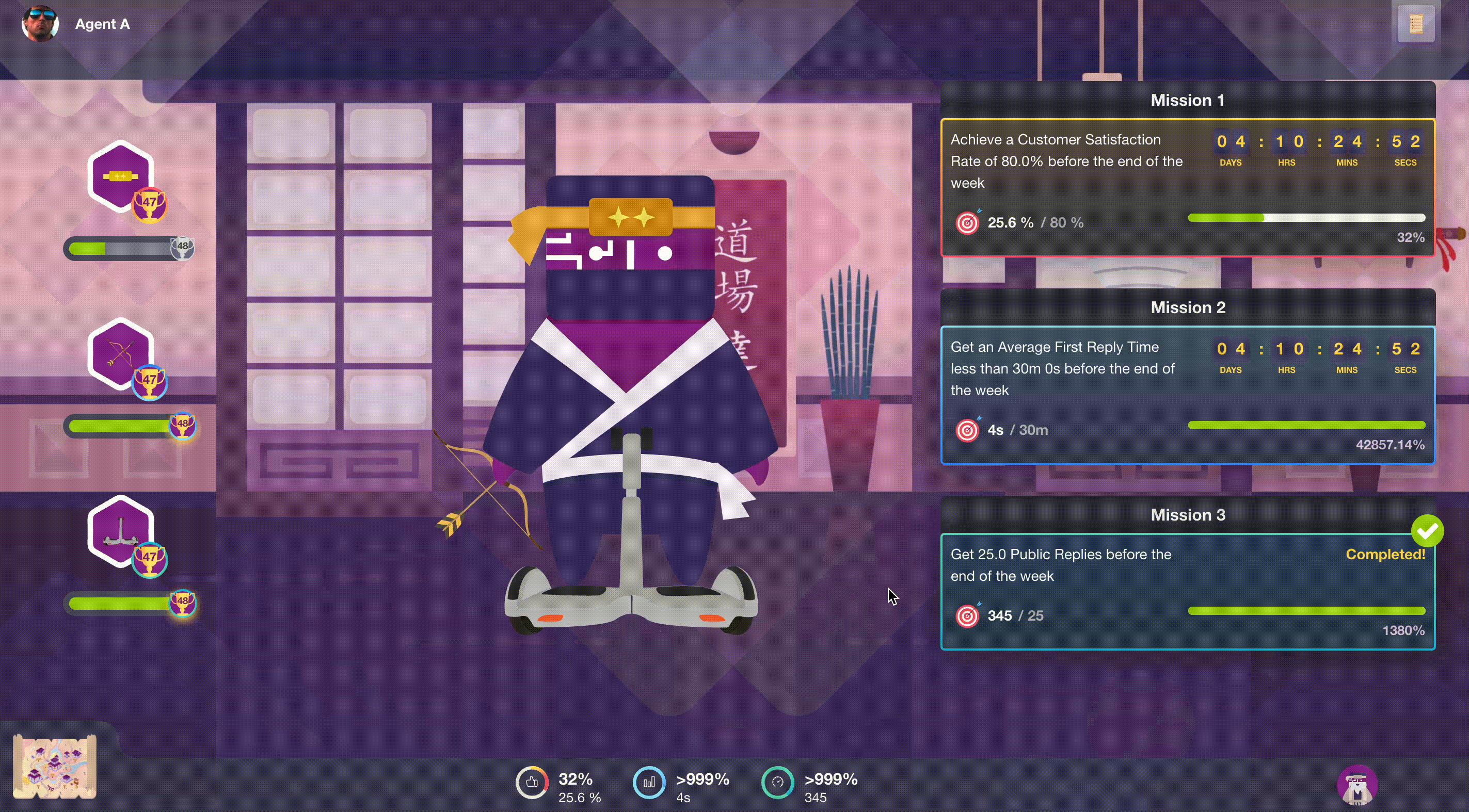Customer service understaffing is one of the biggest issues plaguing companies today.
When businesses are looking to trim costs, the customer service department is usually the first to experience cuts. Sure — cutting your agents may rebuild parts of your budget but are the financial gains worth killing your customer retention?
Lack of staffing in customer service has been linked to declining customer satisfaction, which, in turn, leads to lower loyalty and greater defections. Over half, 61% according to Zendesk, of customers are likely to switch to a competitor after experiencing a negative customer experience.
The power of good customer satisfaction cannot be understated. According to Hubspot Research, 93% of happy customers were found more likely to return to your business after the first successful purchase. Better yet, 77% of happy customers will become self-identified promoters, sharing their positive experiences with friends and family online, in person, and even leaving a raving review on your site!
But what happens when your team is experiencing staffing issues in the workplace? How do you avoid the pitfalls of understaffing and in such unpredictable times, how can we give people the level of service they expect?
We have some ideas.
The puzzle of customer service staffing
Striking a balance between maintaining departmental budgets, servicing your customers, and appropriate staffing levels is an ongoing task. Demands will rise and fall and it is the responsibility of leadership to ensure that staffing issues in the workplace don’t come to impact the customer experience.
Below is a short introduction to the common issues managers face while performing their customer service staffing duties.
What is overstaffing?
Better have too many agents than too few, right?
Wrong.
It may seem counterintuitive but overstaffing is just as detrimental as understaffing. Because of this, it’s worthwhile to understand how and why having too many agents can mess with your CSAT.
Overstaffing in customer service can create some major issues that can impact not only customer experience but the financial success of your company at large.
Overstaffing can eat up a department’s budget. Spreading resources thin by hiring and providing wages to a new group of inexperienced agents is a quick but very ineffective remedy for high-volume service days. Rather, investing in a few highly ambitious agents can increase the quality and quantity of happy customers.
Additionally, overstaffing can actually lead to the creation of disorganized and disengaged agents in your workforce. An agent with an overstaffed team may feel overwhelmed by others who take on tasks faster than they can. All of a sudden, they notice that everyone but themselves and the other new guy is completing interactions. With too few available tasks, these agents become bored, demotivated, and what’s even worse — they receive little real-time experience with customers.
What is understaffing?

Understaffing is a term you use for describing a situation in which a company or organization does not have enough employees to meet its needs. In some cases, that lack of staffing can come from a rapid scaling process or a recent scale-down.
Understaffing problems can lead to several challenges, including decreased productivity, customer service issues, and increased employee stress.
And in customer service, understaffing is actually a tangible problem. When you don’t have enough people to handle demand, it impacts the company’s reputation immensely. Understaffing issues can lead to long wait time, frustrated customers, and a significant loss in revenue.
But the most obvious problem with understaffing is that it can lead to poor customer experience and kill your hard-earned CSAT.
When you have fewer people working, those remaining are overworked and less able to deal with each individual concern or issue that arises. A customer who’s had to wait 20 minutes in line may not be satisfied getting a call back in two hours, or having to wait until the next day for someone to return their call at all. What’s more, with fewer employees, there isn’t always someone available to answer questions customers may have while they’re waiting.
What it’s like working short-staffed as a support hero
As is with overstaffing, a lack of staffing in customer service can leave your employees under-trained and under-motivated to perform well.
Understaffing can lead to an overall decrease in the quality of customer service, lowered team morale, and a lack of professionalism, which can be detrimental to your business’ brand reputation.
Providing customer service in an ever-demanding and short-tempered world is hard enough as is. But when an agent realizes that they are only one of few available to take on the responsibility, the job can feel overwhelming.
Since the 2020 pandemic, attention has been laser-focused on understanding and avoiding call center burnout. Understaffing is a significant factor in this.
Most agents are called to customer service because of their naturally optimistic and problem-solving personalities. Put these shining stars under too much pressure and their natural talents and learned skills become secondary to making it through the day.
Drained, frustrated, and feeling helpless, burnt-out agents on understaffed teams will feel very little recourse to overcome personal challenges. Worse, it becomes even harder to find the motivation to build a successful career in the industry that burnt them out in the first place.
Learn more: Call center burnout: defusing the office time bomb
For managers who have to simultaneously please their teams, customers, and upper management understaffing is a nightmare. At the end of the day, the decision to downsize is typically not theirs to make. Ironically, a shrinking team actually means more work for managers.
Team managers will have to re-organize workforce planning, which means new scheduling puzzles to solve. QA Leads may need to spend the extra time that they do not have retraining agents for new channel assignments. And when overall agent performance decreases because of the added pressure, team leads need to answer to upper management about the causes of their slipping CSAT.
With all of these detrimental results, why are so many customer service teams working short staffed?
Downsizing in customer service

Downsizing refers to the act of laying off employees as a result of economic strain or financial mismanagement. As worries rise that the global economy may enter an intense recession, many corporations have announced major layoffs, which is one of the main causes of understaffing.
From the most influential investing firms to video streaming sites, downsizing has become a common practice for companies. In a Mondo report, we see that on January 4, 2023, Goldman Sachs was said to have already released 8% of their workforce before the new year. On the same day, Salesforce CEO Marc Benioff announced their intention to cut a total of 7,000 jobs from their workforce before February 2022. And finally, but certainly not the last of its kind, Vimeo, a popular video streaming platform, plans to lay off a whopping 11% of their employees at the end of 2023. This comes on top of their reported downsizing in July 2022 where 6% of their then workforce were let go.
What bonds these all together were the CEOs’ explanations that the decision to downsize was made in an attempt to maintain financial flexibility, save costs, or correct for mismanaged over-hiring practices.
However, it’s not just big corporations that are feeling the pressure to cut back. The COVID-19 pandemic and the resulting world turmoil have caused massive layoffs both in startups as well.

Still, the customer service department is usually among the first departments companies look at when they try to cut costs. And since this industry tends to be seasonal, letting people go in low season might feel like the safest decision, but talent is harder to find than one might hope.
These layoffs help save money in operations but do not foster better relationships with customers.
For example, in 2020, 2021, and most recently in February 2022 Booking Holdings eliminated about 25% of its workforce across 60 countries because of the financial pressures felt after the COVID-19 pandemic halted almost all hospitality support services. Three years of cuts represent thousands of jobs lost and shrunken teams.
As the number of laid-off employees grows and public perception diminishes, the chance that customers will forgive negative experiences with Booking.com becomes more and more likely.

The impact of understaffing in customer service
Rapid downsizing leads to problems with customer service staffing, which can have an immense effect on CSAT, company reputation, agent performance, etc. Here are some of the negative effects of being short-staffed on companies and their customers.
1. Quality
When there are fewer employees available to assist consumers and operate manufacturing lines, the quality of the product and service diminishes. When a company prioritizes quotas over quality, fewer people must work harder to handle a greater volume of work, and mistakes rise.
Poor quality erodes a company’s reputation and drives consumers away over time.
Read more: 17 unique ways to improve quality assurance in a call center in 2022
2. Customer satisfaction

When an organization is always short-staffed at work, it’s hard to provide adequate service, and customers may have to wait longer for assistance or go without assistance altogether. This can lead to frustration and dissatisfaction.
In some cases, understaffing at the workplace may also result in poor employee satisfaction and frustration, because they cannot interact with the customer properly and give them the attention they deserve.
3. Employee productivity and stress
In many cases, layoffs feel like a betrayal, one that demotivates even those who avoid losing their job. As a result, the remaining customer service staffing is likely to grow more disengaged.
Needless to say, customers are always negatively impacted by agents’ detachment from their roles and responsibilities.
Understaffing in the workplace makes remaining workers responsible for additional work, which increases stress on agents to complete tasks and fulfill performance goals. Working short-staffed also affects employee morale, lowers job satisfaction, harms an employee’s mental and physical health, and can lengthen the amount of time they must take off from work.
According to the CNBC Momentive Workforce Survey, by the end of 2021, half of all employees believed their employers were understaffed. 43% of them admitted having thought about leaving their jobs in the previous three months. One-third of workers nationwide had considered leaving their jobs for a long time.
How to outsmart lack of staffing in customer service?
Sometimes hiring new people is not an option (budget constraints, time limitations, different priorities,etc.) How do you then play your cards right to give customers the best possible service using the resources available?
Here’s where you start.
1. More is less: use your resources right
Knowing how and where to optimize your processes for your resources to focus on what matters most is crucial. Automate unnecessary manual work, and make sure to save time on QA rating and reporting. Using Excel for calculating metrics is not just a thing of the past — it is a luxurious way to waste time when you are understaffed at work.
You might be tempted to spread your limited staff across all of the tasks you need to accomplish, but it can actually be more effective to concentrate your team’s efforts on the most important tasks. This is because when people feel like their work is important, they’re more engaged and invested in the outcome.
For example, if a customer comes in with an urgent problem that needs immediate attention, having only one service rep available can motivate them to get the problem resolved quickly instead of letting it drag on while they also finish other tasks.
Read more: Customer Service Efficiency: E-Commerce Guide + Tips from Industry Leaders
2. Motivate your agents
It’s critical to make sure customer service reps are consistently motivated and encouraged to provide their best work.
When people know what you expect of them, they’re more likely to do it. Instead of focusing on punishing poor performance, focus on setting specific goals for each employee that can help drive better performance and reinforce the importance of doing good work. Make sure you have regular check-ins with each employee to track their progress towards their goals and provide guidance along the way.
The goals you set for your agents need to be specific and time-bound, related to individual performance and overall company goals. The more detailed you can get on those goals the better.
Here’s how you can create those goals (called Missions) in Kaizo.

Rewarding employees for great customer service can also motivate them to perform at their highest level. They will feel gratitude and satisfaction for their efforts, which will motivate them to do better work in the future. When they believe that their organization sees and values their efforts, they are more likely to keep that internal motivation up.
3. Leverage AI technology
There are lots of processes that go into customer service. You handle returns, complaints, refunds, general Q&A, purchases, etc. No wonder it is so easy to get trapped amid all that data, trying to find a way to decrease your Resolution Time and stop tossing a customer around like a hot potato.
Top performers are already using the power of AI-powered and to help keep track of customer satisfaction levels and identify areas where service needs to be improved. It can also help you manage your customer service staff more effectively, by providing real-time data on call volume and customer wait times.
This is why you need an all-in-one platform to bring all of those processes together for efficient customer support operations and empowered agents. Kaizo, for example, utilizes real-time data to track performance and analyzes insights and customer interactions to help you give agents actionable advice on where they can improve. With the help of Kaizo, you don’t have to worry about staffing issues in the workplace anymore.
4. Look for resources internally
To outsmart the lack of staff in the workplace, make sure you are using your resources efficiently. And one sure way to start doing this is by enhancing customer service training, retraining and reskilling your agents when the situation calls for it.
When you’re short-staffed, it’s tempting to throw your hands up and declare that your employees simply can’t handle the demands of a certain day. This can be true from time to time — but more often than not, your employees are capable of doing more than you may realize. It’s just a matter of getting creative about how to do the job without adding staff.
By creating a culture of coaching, you can keep your agents in this learning mode at all times and make sure they can fill in the gaps when your short-staffed teams need a little help.
Here’s a Pro Tip for the bookworms interested in boosting their knowledge of customer service and leadership. We listed 30 books about customer service to read in 2023! Head on over to your library and check a few out!
Your budgets may be tight but free resources are abundant. And if you see an agent looking over your shoulder, lend them one of these expert reads as well! You never know. That agent may be the team lead you’ve been searching for.
Learn More: VIDEO: Developing Agents’ Careers Amid the COVID-19 Pandemic with Sparkle Joy, Deel, Rocket, and HomeDeco
5. Identify priorities
When you’re on a tight budget but your customers are asking for extra help, it’s easy to feel like you don’t have the money for more staff. But hiring new employees isn’t the only way to handle an understaffed holiday season. One strategy is to prioritize customer issues so that you address the most urgent ones first.
As an example, if you’re at a travel agency and a customer comes in with an issue, maybe their flight has been delayed and they need to extend their car rental. The former is probably going to be a more important issue than answering questions about vehicle rental. So make sure that the customer gets helped right away while another person answers the questions that can be deprioritized at the beginning.
In addition, any tasks that are essential to the operation of your business should be given top priority. These may include customer service, accounting, and inventory management.
After all, it’s impossible to deny that the economy is in a state of flux. Companies are doing more with less and learning how to become more efficient with resources they already have. But when companies are faced with peak periods of business, it can be difficult to handle an influx of customers without adding on staff.
6. Automate manual processes
There is never enough time in a day but when you’re always short-staffed at work managing time and tasks appropriately feels like an impossible task. Team leads are already under pressure these days to be everything at once; a mentor, coach, fill-in agent, data analyst, and administrator.
Automated processes can save call centers hours otherwise spent on tedious data entry.
Kaizo offers automated solutions for customer service reporting, raw data exporting, call volume maps, and smart notifications that alert leads to their agent’s achievements.
Marley Spoon found incredible success with our automated performance analysis solutions called Scorecards. Like many of our users, Marley Spoon needed better solutions in terms of performance visibility and remote workforce management. On top of that, they needed relevant up-to-date information. Meaning the decisions made about staffing, shift management, and even skills training needed to become more effective.
In their customer story, Marley Spoon credits Kaizo’s real-time automation as having “gifted them with extra time, saved by ditching spreadsheets, and with greater visibility of productivity support by quality metrics.”
With Kaizo running automation in the background, team leads who are working short-staffed can actually guide their agents through difficult times rather than having their heads buried in manual excel sheets.
7. Use negative feedback to your advantage
As you know, negative feedback from customers is inevitable. Your agents work hard to increase customer happiness but as the saying goes – you can’t please them all!
By seeing your negative feedback as an asset rather than an issue, managers can act on the information customers provide. Especially their complaints. Customer intelligence is your key to delivering quality service and when you’re missing a few agents the insights gained from customer data can help fill whatever gaps were left in their place.
Documenting negative feedback as a resource will help teams identify patterns of service provision that customers don’t like. Predicting customer behaviors and preferences is a tested science in customer service and with any science, you need to examine your results after developing a hypothesis.
By collecting and, most importantly, sharing the trends in customer dissatisfaction leads kill two birds with one stone.
Firstly, leads will have sustained and actionable oversight of real-time customer data. Secondly, by collecting and sharing insights that are valuable for other departments (i.e. product design, sales, or marketing) customer support teams position themselves as integral to the company. In turn, proving their importance and perhaps convincing upper leadership to look elsewhere for making cuts to staff.
8. Encourage your agents to ask for help
In such times of stress, agents may fear admitting to their mistakes. To them, sharing their need for extra skill-training with team leads may be the first step toward their dismissal. Ultimately, agents, like all of us, fear that asking for help will lead to their early and immediate dismissal.
The first rule in leadership is to encourage open discussion and create a positive environment for their staff to grow, whether you’re managing 500 employees at a time or 50. Having the right leadership and accessibility to performance data can be a game changer. This ultimately can help ease an agent’s need to hide their shortcomings at the fear of losing their job. Thus, cutting the fluff and empowering agents to solve problems as they arise.
By using these simple tips you can get the most value out of your existing teams and kick understaffing issues to the curb.



